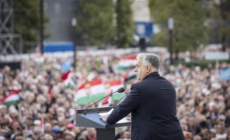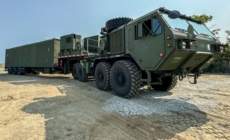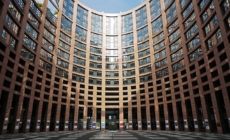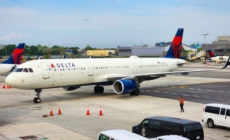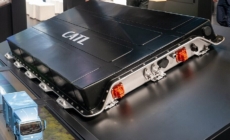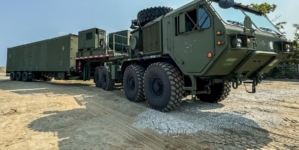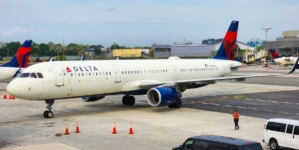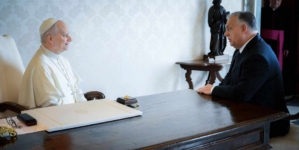-
Government Launches New Home Support Program for Public Service Workers - 22 mins ago
-
US-China Talks: Three Things To Watch as Trump Meets Xi - 37 mins ago
-
With food stamps set to dry up Nov. 1, SNAP recipients say they fear what’s next - 38 mins ago
-
Shohei Ohtani, Freddie Freeman Cap Off One of the Greatest World Series Games Ever - 47 mins ago
-
Film on Nobel Laureate Ferenc Krausz Wins Best Documentary in Kraków - 54 mins ago
-
US Missiles Stationed in Philippines Can Reach China: Official - about 1 hour ago
-
New U.S. Sanctions Have No Impact on Energy Supply Yet, Says Foreign Minister - about 1 hour ago
-
Dodgers WORLD SERIES WALK-OFF 🚨 Jeter, A-Rod, Papi recap Ohtani’s HISTORIC NIGHT, 18-inning THRILLER - 2 hours ago
-
US sanctions pose no immediate threat to Hungary’s energy supply, minister says - 2 hours ago
-
Delta Flight Lands Uneventfully—Then Flight Attendant Makes Viral Mistake - 2 hours ago
Map Tracks Royal Air Force Patrol Along Russia’s Border
The United Kingdom deployed two Royal Air Force surveillance aircraft for a 12-hour patrol along the border between Russia and the eastern flank of NATO on Thursday.
Newsweek has emailed the Russian Defense and Foreign Ministries for comment.
Why It Matters
The British aerial patrol comes as Russia continues carrying out drone and missile strikes against Ukraine, prompting neighboring NATO allies to scramble fighter jets to protect their airspace. Last month, Poland said it shot down intruding Russian drones.
Since the start of Russia’s war in Ukraine, NATO allies—including the United States—have deployed surveillance aircraft to Eastern Europe, with their flights publicly trackable. A Russian fighter jet intercepted a U.S. maritime patrol aircraft over the Black Sea in late August.
What To Know
The Royal Air Force said an RC-135 electronic intelligence surveillance aircraft and a P-8A maritime patrol aircraft collectively conducted a 10,000-mile mission on Thursday, flying a route from northern Europe along the border with Russia to the Black Sea.
“Both aircraft are designed to gather intelligence using a range of methods to boost operational awareness and provide valuable data for analysis,” the Royal Air Force said, adding that the RC-135 aircraft is capable of eavesdropping on communications.
Publicly available data from online service Flightradar24 shows the Royal Air Force RC-135 aircraft, using the call sign “RRR7209,” departed Waddington in England, the main operating base for British airborne intelligence aircraft, for northern Norway.
After crossing from Norway into Finland, the aircraft was tracked flying south along the Russian border and over the three Baltic states—Estonia, Latvia and Lithuania.
The spy flight continued over Poland, Slovakia, Hungary and Romania, which border Belarus, Ukraine and Moldova, before reaching the Black Sea, where it was tracked over waters southwest of Russian-occupied Crimea, according to Flightradar24.
The RC-135 aircraft flew west to return to Waddington after completing its mission. Regarding the P-8A aircraft, the Royal Air Force said it “flew a route focused around the Baltic Sea,” where NATO is guarding critical undersea communication cables.
The Royal Air Force said the dual flight mission, supported by a U.S. Air Force KC-135 refueling aircraft to extend its operational reach, demonstrated NATO’s commitment to collective defense and its ability to respond to emerging threats.

What People Are Saying
U.K. Defense Secretary John Healey said in a press release on Friday: “This was a substantial joint mission with our U.S. and NATO allies. Not only does this provide valuable intelligence to boost the operational awareness of our armed forces, but sends a powerful message of NATO unity to [Russian President Vladimir Putin] and our adversaries.”
Royal Air Force Group Captain Matthew D’Aubyn said in a press release on Friday: “Missions like this demonstrate NATO’s unity and readiness to defend its members against any aggression. Our ability to operate seamlessly with USAF [United States Air Force] assets underscores the strength of the NATO alliance.”
What Happens Next
NATO allies continue to maintain a high defense posture amid Russia’s ongoing large-scale attacks against Ukraine. It remains unclear whether additional Russian drones will violate NATO airspace, which could prompt the alliance to bolster its response.
Source link
